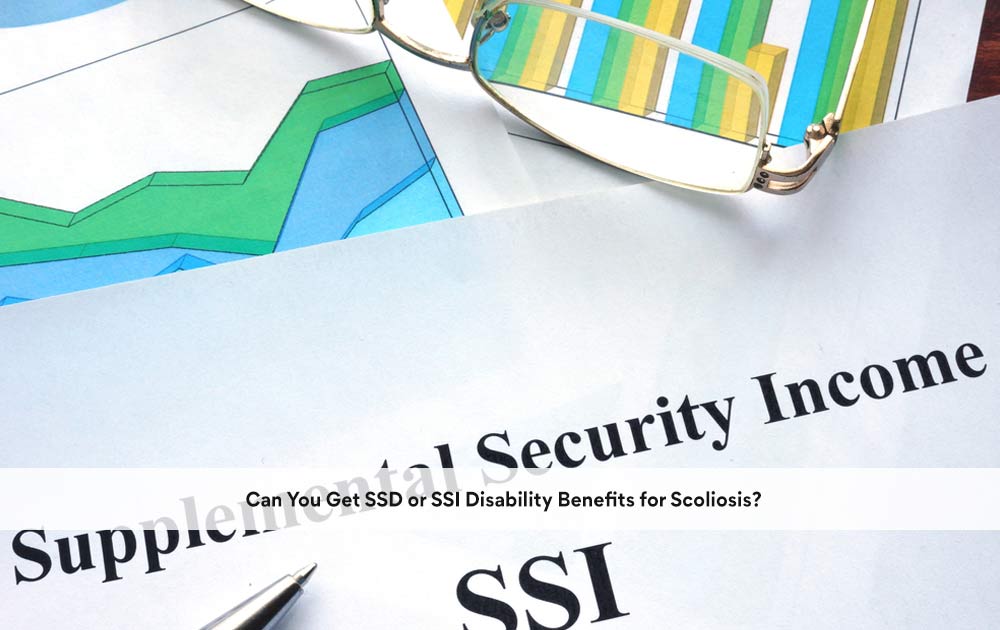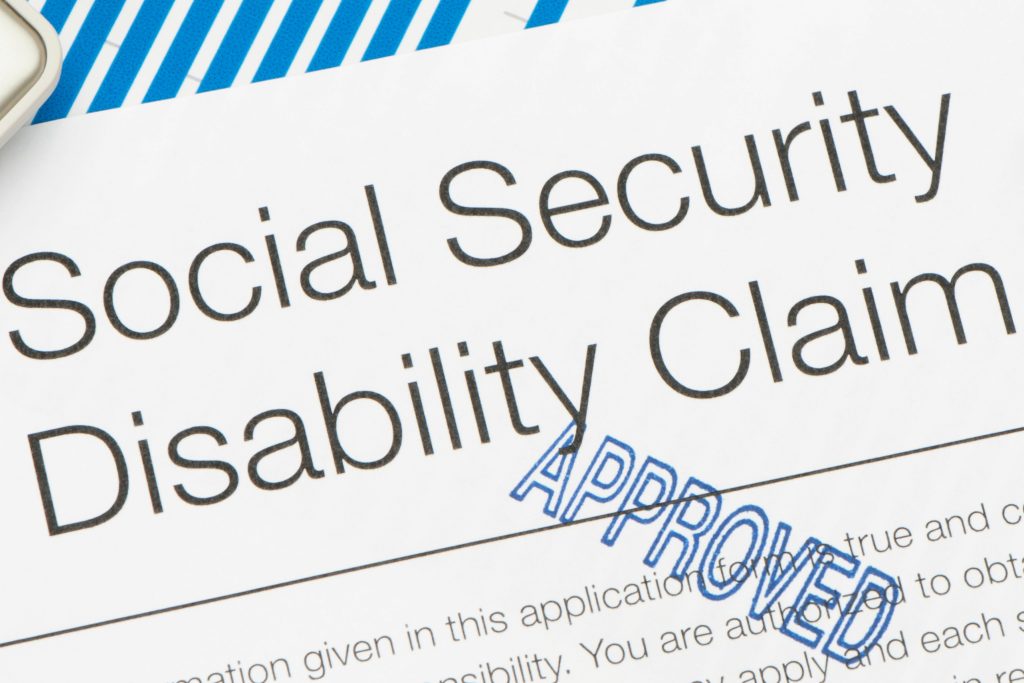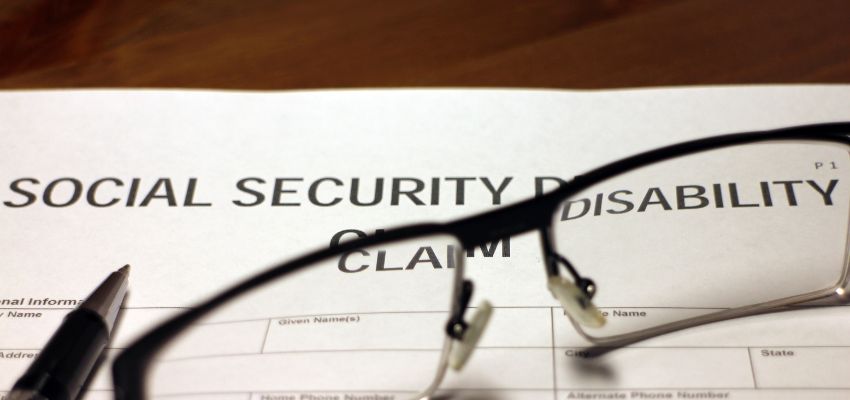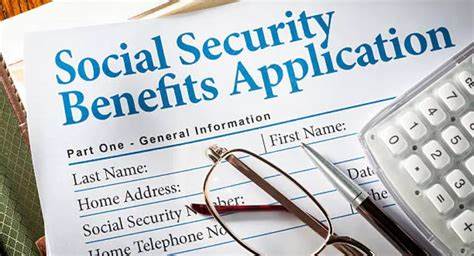La escoliosis es una afección médica caracterizada por una curvatura anormal de la columna vertebral. Puede causar dolor, incomodidad y limitación de la movilidad, lo que dificulta la realización de las actividades cotidianas. Para ayudar a los afectados por escoliosis, el gobierno ofrece un programa de ayudas económicas conocido como Subsidio de Subsistencia para Discapacitados por Escoliosis. Este artículo ofrece una guía completa sobre cómo solicitar y optar a este subsidio, cubriendo diversos aspectos como los criterios de elegibilidad, el proceso de solicitud, los retos y las ayudas disponibles.
¿Qué es el subsidio de subsistencia para discapacitados con escoliosis?
El subsidio de subsistencia para discapacitados con escoliosis es una prestación económica que concede el Gobierno a las personas con escoliosis que necesitan ayuda adicional debido a su enfermedad. Está diseñada para ayudar a cubrir los costes adicionales asociados a la vida con escoliosis, como gastos médicos, ayudas para la movilidad y equipamiento especializado. Pueden acceder a este subsidio personas de todas las edades, desde niños hasta adultos, que cumplan los criterios de elegibilidad.

Requisitos para percibir la prestación de subsistencia para discapacitados con escoliosis
Para tener derecho a la prestación de subsistencia para discapacitados por escoliosis, las personas deben cumplir determinados requisitos. En primer lugar, deben tener un diagnóstico de escoliosis emitido por un profesional médico. La gravedad de la enfermedad no es un factor determinante para tener derecho a la prestación, ya que ésta se basa en el impacto que la escoliosis tiene en la vida diaria de la persona. En segundo lugar, el solicitante debe haber experimentado dificultades en sus actividades cotidianas durante al menos tres meses o prever que las experimentará durante al menos otros seis meses.
Guía paso a paso: Cómo solicitar el subsidio de subsistencia para discapacitados con escoliosis
Solicitar la prestación de subsistencia para discapacitados con escoliosis puede ser un proceso complejo, pero con la orientación adecuada puede resultar más fácil. A continuación le ofrecemos una guía paso a paso para ayudarle en el proceso de solicitud:
- Investigación: Empiece por recopilar información sobre el subsidio de subsistencia para discapacitados por escoliosis, incluidos los criterios de concesión, la documentación requerida y el propio impreso de solicitud. Esto le ayudará a entender lo que se espera de usted y a prepararse en consecuencia.
- Póngase en contacto con el Ministerio de Trabajo y Pensiones (DWP): Póngase en contacto con el DWP para solicitar un formulario de solicitud. Pueden orientarte sobre el proceso y responder a tus preguntas.
- Reúna la documentación necesaria: Reúna todos los documentos pertinentes en apoyo de su solicitud. Puede incluir informes médicos, resultados de pruebas y cualquier otra prueba que demuestre el impacto de la escoliosis en tu vida diaria.
- Rellene el formulario de solicitud: Tómese su tiempo para cumplimentar el formulario de solicitud con precisión y detenimiento. Proporcione información detallada sobre su enfermedad, las dificultades a las que se enfrenta y el apoyo que necesita.
- Busque ayuda profesional si es necesario: Si el proceso de solicitud le resulta abrumador o necesita ayuda para rellenar el formulario, considere la posibilidad de pedir ayuda a un defensor de los discapacitados o a una organización de apoyo especializada en escoliosis.
- Presente la solicitud: Una vez cumplimentado el formulario de solicitud y reunida toda la documentación necesaria, preséntelo al DWP. Conserve copias de todo para su archivo.

Recopilación de la documentación necesaria para solicitar la prestación de incapacidad permanente por escoliosis
A la hora de solicitar el subsidio de subsistencia para discapacitados por escoliosis, es fundamental aportar documentación acreditativa que refuerce su caso. Suelen ser necesarios los siguientes documentos:
- Informes médicos: Incluya todos los informes médicos o cartas de profesionales sanitarios que confirmen su diagnóstico de escoliosis y describan las repercusiones que tiene en su vida diaria.
- Resultados de las pruebas: Si se ha sometido a pruebas o escáneres relacionados con su escoliosis, como radiografías o resonancias magnéticas, incluya copias de estos resultados para aportar más pruebas de su enfermedad.
- Registros de tratamiento: Si ha recibido algún tratamiento para la escoliosis, como fisioterapia o cirugía, incluya registros de estos tratamientos para demostrar los cuidados continuos que necesita.
- Declaraciones personales: Escribe una declaración personal detallando tus experiencias con la escoliosis, los retos a los que te enfrentas y el apoyo que necesitas. Esto puede aportar una perspectiva más personal de tu enfermedad.
- Cartas de apoyo: Si es posible, obtenga cartas de apoyo de profesionales sanitarios, como su médico de atención primaria o especialista, que puedan dar fe del impacto de la escoliosis en su vida diaria.
Consejos para rellenar el formulario de solicitud de la prestación de subsistencia para discapacitados con escoliosis
Rellenar el formulario de solicitud de la prestación de subsistencia para discapacitados por escoliosis puede ser una tarea desalentadora, pero con algunos consejos y orientación puede resultar más fácil. Estos son algunos consejos que le ayudarán a rellenar el formulario con eficacia:
- Lea atentamente las instrucciones: Antes de iniciar el formulario de solicitud, lea detenidamente las instrucciones para comprender qué información se requiere y cómo debe presentarse.
- Sea detallado y específico: Describa con el mayor detalle posible su enfermedad y las dificultades a las que se enfrenta. Utiliza ejemplos concretos para ilustrar el impacto de la escoliosis en tu vida diaria.
- Utilice un lenguaje claro y conciso: Escriba en un lenguaje claro y conciso para que su solicitud se entienda fácilmente. Evite utilizar jerga médica o términos técnicos que puedan confundir al lector.
- Busque ayuda si la necesita: Si no está seguro de algún apartado del formulario de solicitud o necesita ayuda para rellenarlo, considere la posibilidad de pedir ayuda a un defensor de los discapacitados o a una organización de apoyo especializada en escoliosis.
- Compruebe dos veces su solicitud: Antes de enviar su solicitud, revísela detenidamente para asegurarse de que todas las secciones están cumplimentadas con exactitud y de que se adjunta toda la documentación necesaria.

Dificultades y obstáculos habituales al solicitar una prestación de subsistencia para discapacitados con escoliosis
Applying for the Scoliosis Disability Living Allowance can be a challenging process, and there are common pitfalls that applicants should be aware of. Some of these challenges include:
- Lack of awareness: Many individuals with scoliosis may not be aware of the Scoliosis Disability Living Allowance or may not realize they are eligible for it. Raising awareness about this benefit is crucial to ensure that those who need it can access it.
- Difficulty in gathering documentation: Gathering the necessary documentation can be a time-consuming and challenging task. It may require contacting multiple healthcare professionals and obtaining medical records, which can be a bureaucratic process.
- Insufficient evidence: Providing sufficient evidence to support the application is crucial. However, some individuals may struggle to obtain the necessary medical reports or may not have access to healthcare professionals who can provide supporting letters.
- Complex application form: The application form itself can be complex and confusing, especially for individuals who are not familiar with the process. This can lead to errors or omissions that may affect the outcome of the application.
- Lengthy decision-making process: The decision-making process for the Scoliosis Disability Living Allowance can be lengthy, with some applicants waiting several months for a decision. This can cause additional stress and financial strain for individuals who are in need of immediate support.
El papel de las evaluaciones médicas en las solicitudes de subsidio de subsistencia para discapacitados con escoliosis
As part of the application process for the Scoliosis Disability Living Allowance, applicants may be required to undergo a medical assessment. These assessments are conducted by healthcare professionals who specialize in assessing individuals’ functional abilities and determining their eligibility for the allowance.
The purpose of the medical assessment is to gather additional information about the applicant’s condition and how it affects their daily life. The healthcare professional will assess factors such as mobility, pain levels, and the ability to carry out daily activities independently. The assessment may involve physical examinations, interviews, and the completion of questionnaires.
It is important to note that the medical assessment is not a diagnostic tool. The applicant’s diagnosis of scoliosis should already be established by a medical professional before the assessment takes place. The assessment is primarily focused on evaluating the impact of scoliosis on the individual’s functional abilities and determining their eligibility for the Scoliosis Disability Living Allowance.
Comprender el proceso de toma de decisiones sobre la prestación de subsistencia para discapacitados con escoliosis
Once the application and medical assessment, if required, have been completed, the decision-making process for the Scoliosis Disability Living Allowance begins. The decision is made by the Department of Work and Pensions (DWP) based on the information provided in the application form, supporting documentation, and the medical assessment report.
The DWP considers various factors when making a decision, including the severity of the scoliosis, the impact on daily activities, and the level of support required. They also take into account any additional evidence provided by healthcare professionals or other relevant parties.
It is important to note that the decision-making process can take time, and applicants may experience delays in receiving a decision. However, once a decision has been made, the applicant will be notified in writing, and if eligible, they will start receiving the Scoliosis Disability Living Allowance.
Recurso contra el rechazo de una solicitud de subsidio de subsistencia para discapacitados con escoliosis
In some cases, an application for the Scoliosis Disability Living Allowance may be rejected. If an applicant disagrees with the decision or believes that their application was not assessed correctly, they have the right to appeal the decision.
To appeal a rejected application, the applicant must follow the appeals process outlined by the DWP. This typically involves submitting a written request for reconsideration, providing additional evidence or information to support their case. The DWP will then review the appeal and make a decision based on the new information provided.
If the appeal is unsuccessful, the applicant can further escalate the case to an independent tribunal, where a panel of experts will review the evidence and make a final decision. It is advisable to seek legal advice or assistance from a disability advocate when going through the appeals process to ensure the best possible outcome.
Preguntas frecuentes sobre el subsidio de subsistencia para discapacitados con escoliosis
How much financial assistance does the Scoliosis Disability Living Allowance provide? The amount of financial assistance provided by the Scoliosis Disability Living Allowance varies depending on the individual’s needs and the level of support required. There are two components of the allowance: the care component and the mobility component. The rates for each component are determined by the DWP and are subject to change.
Can I work and still receive the Scoliosis Disability Living Allowance? Yes, it is possible to work and receive the Scoliosis Disability Living Allowance. The allowance is not means-tested, meaning that it is not affected by an individual’s income or savings. However, there are certain rules and limitations regarding work and earnings that applicants should be aware of. It is advisable to seek guidance from the DWP or a disability advocate for specific information related to work and the allowance.
Is the Scoliosis Disability Living Allowance a one-time payment or an ongoing benefit? The Scoliosis Disability Living Allowance is an ongoing benefit that is typically paid every four weeks. Once an individual is approved for the allowance, they will continue to receive it as long as they meet the eligibility criteria and their condition does not significantly improve.
Can children with scoliosis apply for the Scoliosis Disability Living Allowance? Yes, children with scoliosis are eligible to apply for the Scoliosis Disability Living Allowance. The eligibility criteria and application process are similar to those for adults. However, there may be additional considerations for children, such as the impact on their education and development. Parents or guardians can apply on behalf of their child and provide the necessary documentation to support the application.
Recursos y ayuda para las personas que solicitan un subsidio de subsistencia para discapacitados con escoliosis
Applying for the Scoliosis Disability Living Allowance can be a complex and overwhelming process. However, there are resources and support available to help individuals navigate through the application process. Some of these resources include:
- Department of Work and Pensions (DWP): The DWP is the government department responsible for administering the Scoliosis Disability Living Allowance. They can provide guidance on the application process, eligibility criteria, and any other questions or concerns applicants may have.
- Disability advocates: Disability advocates are professionals who specialize in supporting individuals with disabilities through various processes, including applying for benefits. They can provide guidance, assistance with filling out the application form, and advocacy services if needed.
- Support organizations: There are several support organizations that focus on scoliosis and can provide information, resources, and support to individuals applying for the Scoliosis Disability Living Allowance. These organizations may offer helplines, online forums, and educational materials to help individuals navigate the application process.
Historias de éxito: Experiencias reales de beneficiarios del subsidio de subsistencia para discapacitados con escoliosis
Real-life success stories can provide inspiration and hope for individuals going through the process of applying for the Scoliosis Disability Living Allowance. These stories highlight the positive impact that the allowance can have on individuals’ lives and the support it provides. Here are a few examples:
- Sarah, a 32-year-old woman with scoliosis, was struggling to afford the specialized equipment she needed to manage her condition. After applying for the Scoliosis Disability Living Allowance, she was approved and received financial assistance to purchase a wheelchair and other mobility aids. This allowed her to regain her independence and improve her quality of life.
- Mark, a 14-year-old boy with severe scoliosis, was experiencing difficulties in school due to his condition. His parents applied for the Scoliosis Disability Living Allowance and were able to access additional support for Mark, including a teaching assistant and specialized equipment. This enabled Mark to continue his education and achieve his academic goals.
- Lisa, a 45-year-old woman with scoliosis, had been struggling with chronic pain and limited mobility. After applying for the Scoliosis Disability Living Allowance, she received financial assistance to cover the costs of physiotherapy and pain management treatments. This allowed her to manage her condition more effectively and improve her overall well-being.
These success stories demonstrate the positive impact that the Scoliosis Disability Living Allowance can have on individuals’ lives. By providing financial support and access to necessary resources, the allowance helps individuals with scoliosis overcome challenges and improve their quality of life.
Referencias
- Benefits and Work. “How to Apply for Disability Living Allowance.” Benefits and Work, 2023. Available at: https://www.benefitsandwork.co.uk
- National Institute for Health and Care Excellence (NICE). “Scoliosis: Diagnosis and Management.” NICE, 2023. Available at: https://www.nice.org.uk/guidance/ng41
- Scoliosis Research Society (SRS). “Scoliosis Facts and Information.” SRS, 2022. Available at: https://www.srs.org
- NHS. “Scoliosis.” NHS, 2023. Available at: https://www.nhs.uk/conditions/scoliosis/
- Department of Work and Pensions (DWP). “Disability Living Allowance.” DWP, 2023. Available at: https://www.gov.uk/disability-living-allowance
- Disability Rights UK. “How to Apply for Disability Benefits.” Disability Rights UK, 2023. Available at: https://www.disabilityrightsuk.org
- Asesoramiento a los ciudadanos. "Subsidio de subsistencia para discapacitados". Citizens Advice, 2023. Disponible en: https://www.citizensadvice.org.uk/benefits/sick-or-disabled-people-and-carers/disability-living-allowance/
- Ámbito de aplicación. "Solicitar prestaciones: Lo que hay que saber". Scope, 2023. Disponible en: https://www.scope.org.uk/advice-and-support/benefits/
- Carers UK. "Subsidio de subsistencia para discapacitados y ayuda para la independencia personal". Carers UK, 2023. Disponible en: https://www.carersuk.org/help-and-advice/financial-support/disability-living-allowance
- Acción por la Discapacidad. "Solicitud de prestaciones por incapacidad: Guía". Action on Disability, 2023. Disponible en: https://www.actionondisability.org.uk
- Centro de Prestaciones por Discapacidad. "Subsidio de subsistencia por discapacidad para adultos". The Disability Benefits Centre, 2023. Disponible en: https://www.disabilitybenefitscentre.co.uk/disability-living-allowance
- Asociación de Escoliosis. "Ayuda financiera para la escoliosis". The Scoliosis Association, 2023. Disponible en: https://www.scoliosisassociation.org.uk
- Fondo Familiar. "Subvenciones para familias con hijos discapacitados". Fondo Familiar, 2023. Disponible en: https://www.familyfund.org.uk
- Alianza por la Discapacidad. "Prestaciones por incapacidad: Lo que debe saber". Alianza por la Discapacidad, 2023. Disponible en: https://www.disabilityalliance.org
- Asesoramiento sobre prestaciones PIP y DLA. "Escoliosis y subsidio de subsistencia para discapacitados". Asesoramiento sobre prestaciones de PIP y DLA, 2023. Disponible en: https://www.pipanddlaadvice.com

